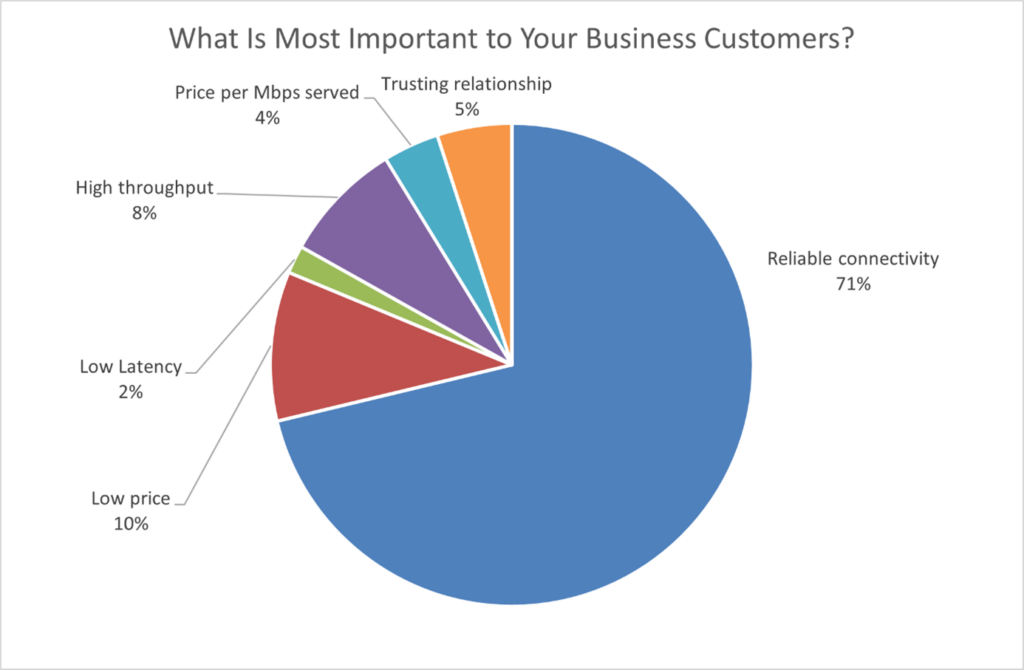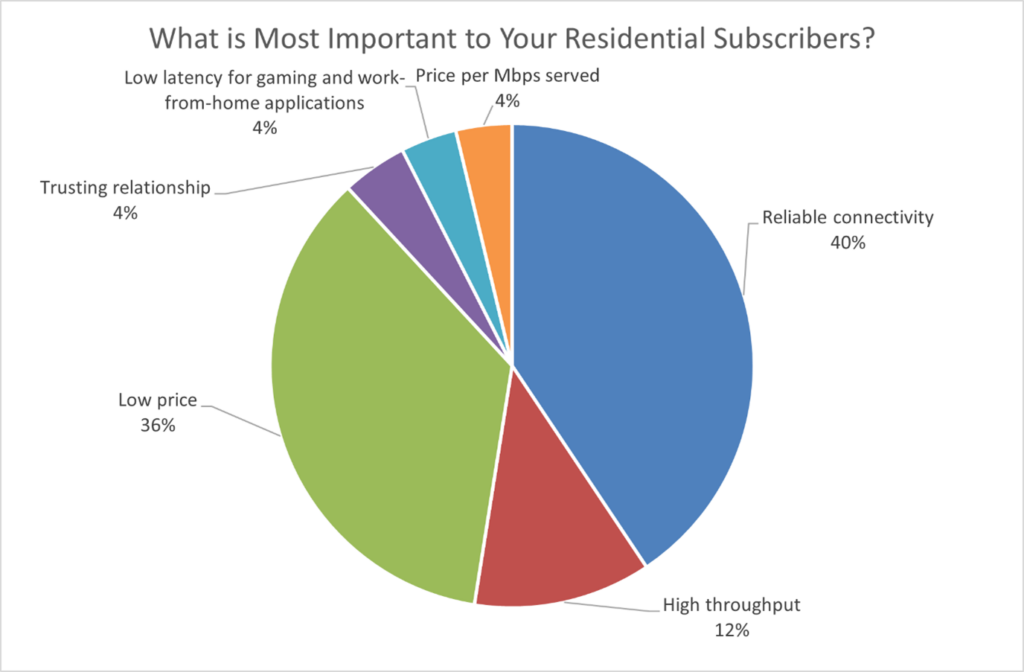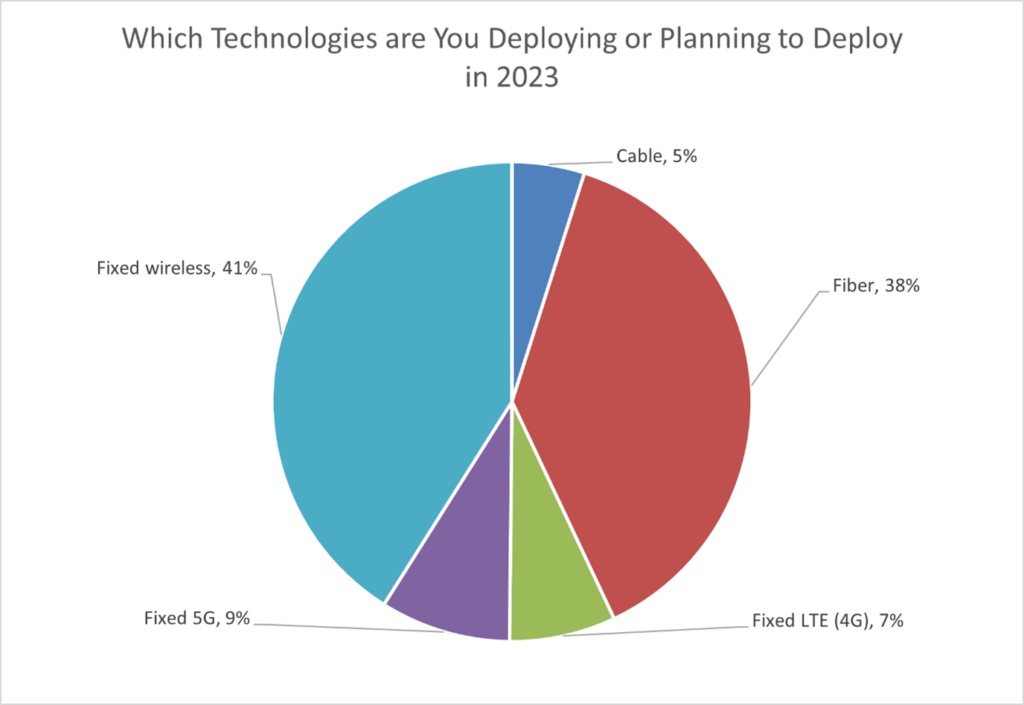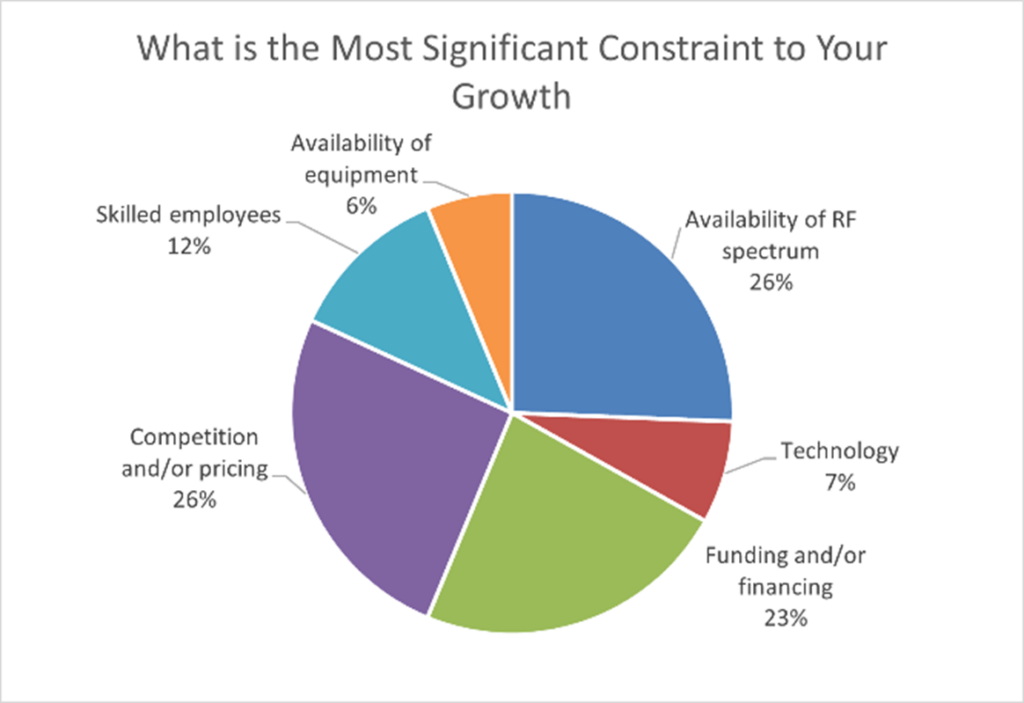Seventh Annual Cambium Networks Survey Signals Business and Residential Customers Value Reliable Connectivity Highest, Above Pricing and Throughput
Cambium Networks’ latest broadband service provider survey found that both business and residential customers value reliable connectivity above pricing and throughput. 71% of business customers ranked reliability as their top consideration, while 41% of residential customers ranked reliability No. 1, followed by low price (36%). Download the full report here.


Optimization Tools
To ensure the successful delivery of high-quality service to customers, approximately 75% of survey respondents pointed to service optimization tools as being key. Providers noted that tools such as TCP optimization, application visibility control and bandwidth shaping helped them identify and fix problems quickly – in some cases, even before subscribers were aware of any issues with their service.
Moreover, many service providers embraced tools to help them optimize each end customer’s online experience: 43% of the respondents viewed end-user optimization tools as being “very important,” while 32% rated the quality of experience tools as “important.”
When asked which technologies they plan to deploy in the future, 41% of broadband service providers indicated fixed wireless. Fiber was a close second at 38%.

Here’s a deeper look at the results of the survey, which was conducted over the summer.
Constraints and Opportunities
For the seventh year in a row, spectrum availability and competition remained the top constraints to broadband service provider growth, with funding trailing close behind. Notably, both competition and pricing have recently increased in importance. It will be interesting to see what impact the availability of 6 GHz has on those markets that make it available for unlicensed outdoor use.

Other potential gating factors to growth include:
- Broadband networks continue to become more complex as multiple technologies are deployed.
- The years-long shortage of skilled technicians to support these technologies has yet to clear up. And not just to hire but to keep. Indeed, 46% of respondents say it is “somewhat difficult” to retain skilled technicians, while 29% say it is “very difficult.”

Solid Business Prospects
About 42% of the broadband service providers participating in the survey report subscriber growth rate between 3% and 10%. Nonetheless, many see more opportunities to add subscribers and generate higher revenue in the months ahead.

For example, ongoing government initiatives to fund broadband initiatives and narrow the digital divide are going to have increasing impact now that states are starting to allocate federally approved funds for specific projects.
An interesting aside: 79% of respondents are NOT currently taking government funding, including 78% of U.S. respondents. Those statistics indicate that these service providers are confident they have businesses that don’t rely on funding to succeed. Should funding be removed or run out, service providers with growth plans that are not dependent on funding will continue to grow.
Multiple Delivery Technologies
Wireless and fiber remain the predominant technologies for broadband service providers – many of whom deploy a fiber infrastructure with a fixed wireless broadband “last mile” architecture. When selecting hardware and software technology, broadband service providers tend to select equipment based first on throughput (46%) and then reliability (33%). This does differ from what their business and residential customers prioritize. Service providers focusing on the customer experience, regardless of the technology used, are finding ways to offer connectivity that amazes business and residential customers. Their methods can create a sustainable competitive advantage and lock in subscriber loyalty.

Business and Residential Customer Needs
An encouraging finding from the survey: customers are largely satisfied with the level of service they receive. When residential customers cancel their service, 53% say it’s because they are moving to a new location and has nothing to do with their broadband service.

Over the course of the year, the growth of residential subscribers outpaced business subscribers by a factor of 2 to 1. That’s an important ratio given how each business customer can contribute more revenue to the service provider than a single residential customer.
The most popular residential service package is 25 Mbps to100 Mbps (63%), followed by 25 Mbps (21%). The speed of the most popular service package has climbed in recent years as residential users deploy more devices and find more uses for their broadband connections. Looking to the future, service providers will likely have ample opportunities to upsell residential subscribers as their usage and needs increase over time.

On the business customer side, providers see small and medium business connectivity as the most likely path to additional revenue. They also see potential in smart homes, and MSP (Managed Service Providers) services are more attractive than smart city and industrial sensor connectivity opportunities, which take more time to create a proposal and win business.
Download the full report here.
